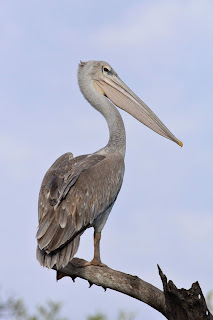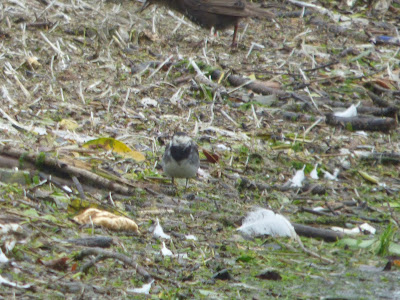Blogs of some of my birding adventures in the UK Saudi Arabia and some other spots around the world.
Tuesday, 26 December 2023
Gambia 2019
Wednesday, 26 July 2023
Broad Meadow Estuary
Tuesday, 13 June 2023
Bird recordings
Since being floored by Covid my old way of birding has had to change. I can't walk anything like the distances I could. So one area I have begun to explore is the world of audio recording. I started with a small digital Dictaphone which worked great but there was no way to transfer it to a computer for playback or analysis
I heard about a great tool, the AudioMoth, from an ornithologist friend, which although a little hard to get hold of is relatively cheap and can be configured to record over days or even weeks and having eventually gotten my hands on one worked really well.
I have been using this for almost a year now and am delighted with the results. I mostly set it up in my garden at home but also of late have been setting it up in the Cemetery Woods at Colne in Lancashire (SD 89770 439895)* and also at Greenfield Nature Reserve at the opposite end of the town from my place (SD 87225 39618). Early efforts were a bit frustrating as getting into wildlife audio recording you soon come to realize how much ambient noise there is about that our wonderful brain filters out for us. However, the AudioMoth's configuration tools are designed to help reduce this.My first outing at Greenfield NR was was at the start of April and we had a total of 28 species including Wren, Chiffchaff, Great Tit, Robin, Bullfinch, Goldfinch, Blackbird, Carrion Crow, Dunnock, Oystercatcher, Jackdaw, Blue Tit, Chaffinch, Goldcrest, Grey Wagtail, Song Thrush, Mallard, Coal Tit, Wood Pigeon, Long Tailed Tit, Blackcap, Jackdaw,, Canada Goose, Greater Spotted Woodpecker, Magpie, Willow Warbler, Song Thrush and possibly Mistle Thrush.
I have been gradually learning bird calls and songs but also make use of a wonderful tool from Cornell University, the Merlin Application which can be downloaded to your smartphone. I have noticed that some calls, like the Ring Necked Pheasant and members of the Pigeon and Dove family cause occasional issues for Merlin, these are almost entirely in the lower frequencies.
Once the recordings are made I use yet another valuable tool to help identify the birds and that is Audacity which allows you to download the WAV files and analyze them via the sonogram, I have taken a screen shot of one of the files I loaded in the back garden recently;
This was recorded at .4:26 in the morning in Mid May and has Wren, Ring Necked Pheasant, Curlew and Blackbird in this minute long image. No I was not up that time but the beauty of AudioMoth is you don't need to be. An obvious thing to say here is if the bird remains silent like many overflying and female ones do you don't know they are there but in combination with visual records this can show a lot more of what is around you, especially when the trees are leafed up and birds can hide easily.
On another front this could be a great way for the visually impaired to become involved in our great past time.
I now have two AudioMoths and am gradually getting the time to get out and place them in more interesting places. The latest piece of kit to arrive (sorry I'm a real sucker for a gadget) is a HydroMoth, which is the underwater version of the AudioMoth, but can be used out of water too. Can't wait to get a chance to try this out.
 |
| Parabolic Microphone |
* for those not familiar with the location coding, this is the one used by the UK Ordinance Survey Maps to identify the location.
© Bernard Bracken 13/6/23








































